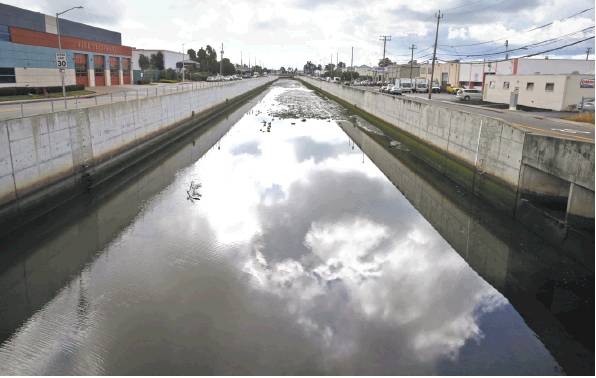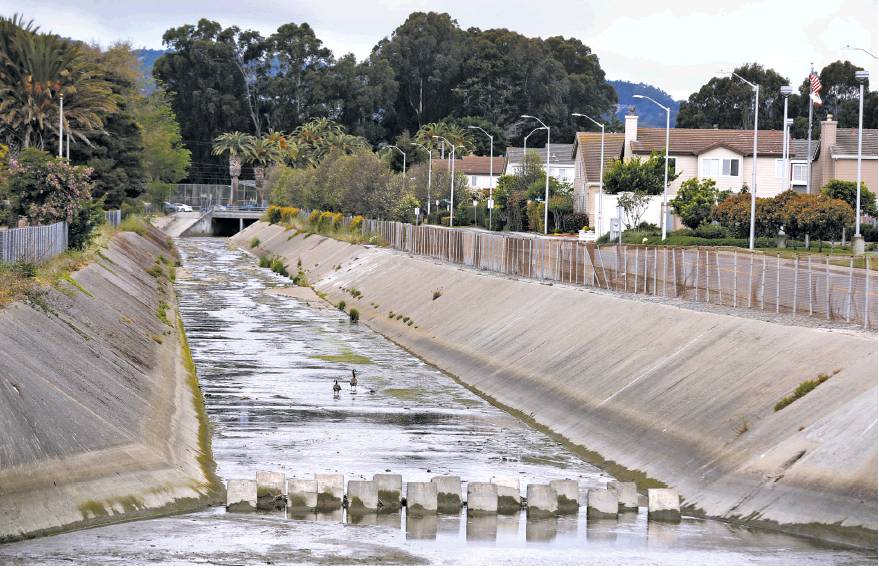Designs on adapting to Bay Area sea rise
Leading architects, engineers provide ideas for reshaping parks, communities
By Kurtis AlexanderProtecting the Bay Area from sea level rise isn’t just about building seawalls. It’s a chance to reshape industry, parks and communities to fit our modern lives.
That’s according to a high-profile group of international architects, engineers and climate experts who have spent the past year developing far-reaching visions for how Bay Area waterfront communities can prepare for global warming.
As they see it, residents of San Rafael may live on floating islands. San Francisco’s Bayview neighborhood could see wetlands restored against a backdrop of thriving arts, food and manufacturing districts. The North Bay’s Highway 37 would be transformed into an elevated scenic byway with an excursion train to historic ghost towns.
“We’re trying to invent landscapes that offer choices to future generations about how to adapt,” said Marcel Wilson, principal of San Francisco’s Bionic Landscape Architecture and a participant in the pioneering Resilient by Design initiative.
Final designs for the resiliency exercise were submitted last week and are expected to be held up as models not only for Northern California but coastal communities across the globe.
The entries come from nine teams of designers, selected from more than 50 applicants. Each was asked to draft a plan for weathering several feet of sea level rise for a different part of the Bay Area. The blueprints, which come with a $250,000 stipend, were encouraged to be innovative as well as financially doable, so they don’t just sit on a shelf.
Richard Mullane, principal of the Australian design practice Hassell, moved from Shanghai to the Bay Area last year when his firm was assigned to South San Francisco. The company opened an office in a historic bank building downtown where it invited the public to weigh in on what their redesigned community should look like.
“I was surprised by how open people were to us coming in and helping out,” Mullane said.
Mullane’s plan is to create more green space around the city’s perpetually flooded Colma Creek. By expanding the buffer along the water, a strategy adopted in nearly all of the resiliency proposals, the natural area would act as a sponge to offset both storm water runoff and sea level rise. The most popular part of the tactic, though, is that it opens up land to recreational opportunities that residents asked for.
“We’re trying to reconnect people with their waterfront and create places of significant community value,” Mullane said. “The city has almost turned its back on what we see as an incredible source of engaging.”
The centerpiece of Mullane’s plan is a parkway along the creek that runs the length of downtown to the bay. Soccer fields, playgrounds, community markets and swimming holes would line the corridor.
In southeastern San Francisco, the idea put forth by a team of three architecture firms is similar. Bjarke Ingels Group, One Architecture and Sherwood Design Engineers were assigned to Islais Creek between the Bayview and Dogpatch neighborhoods. It proposed restoring the tidal stream, which was covered with fill after the 1906 earthquake, but still strengthening the businesses that emerged to shape the area’s industrial legacy.
Under the plan, the mouth of the channelized creek would be opened up and turned into a natural wetlands with walking trails and a kayak launch, helping to buffer sea level rise, while clusters of buildings for light manufacturing, food distribution and arts would be developed on higher ground upstream, preserving the area’s working-class roots.
Specifically, the group suggests increasing industrial uses on land near the San Francisco Wholesale Produce Market on Jerrold Avenue while looking at turning parking lots and paved industrial space into open land to serve as floodplains near the Alemany Farmers Market on Alemany Boulevard and along Cesar Chavez Avenue between Interstate 280 and Highway 101.
To additionally safeguard against flooding, the area would be dotted with colorful rainwater gardens and detention ponds while a “living levee” would offer opportunities for landscaping of native plants and small-scale farming.
“We’re trying to reconcile natural systems with urban systems and plan them together instead of in opposition,” said Jeremy Siegel with Bjarke Ingels Group.
Sites for affordable housing are also suggested in the Islais Creek plan, reflecting a priority of many of the designers to promote social equity.
The Resilient by Design initiative, which is supported primarily by the Rockefeller Foundation, is modeled after a similar exercise on the East Coast, Rebuild by Design. That event tapped the world’s best architectural minds to help strengthen storm-damaged cities in the wake of Hurricane Sandy.
Bay Area organizers hope their designs can be implemented not after a natural disaster but proactively, before the region is inundated with water, and as soon as money becomes available. Climate experts have estimated that water levels along the bay will increase 2 to 6 feet by the end of the century.
“The longer we wait to invest in protection and climate-resilient infrastructure, the more costly it will be,” said Amanda Brown-Stevens, managing director of the initiative.
Brown-Stevens acknowledged that many of the projects won’t be cheap, requiring expensive land acquisitions, for example, or new infrastructure. But she noted that there are alternative ways to move forward, like focusing the work on public property and coordinating land swaps.
There’s also increasing amounts of funding becoming available for climate resiliency. The Bay Area’s Measure AA parcel tax, approved by voters in 2016, is just one. Proposition 68, the statewide parks and water bond on the June ballot, is another.
Kurtis Alexander is a San Francisco Chronicle staff writer. Email: kalexander@sfchronicle.com Twitter: @kurtisalexander
“We’re trying to reconcile natural systems with urban systems and plan them together instead of in opposition.”
Jeremy Siegel, Bjarke Ingels Group


